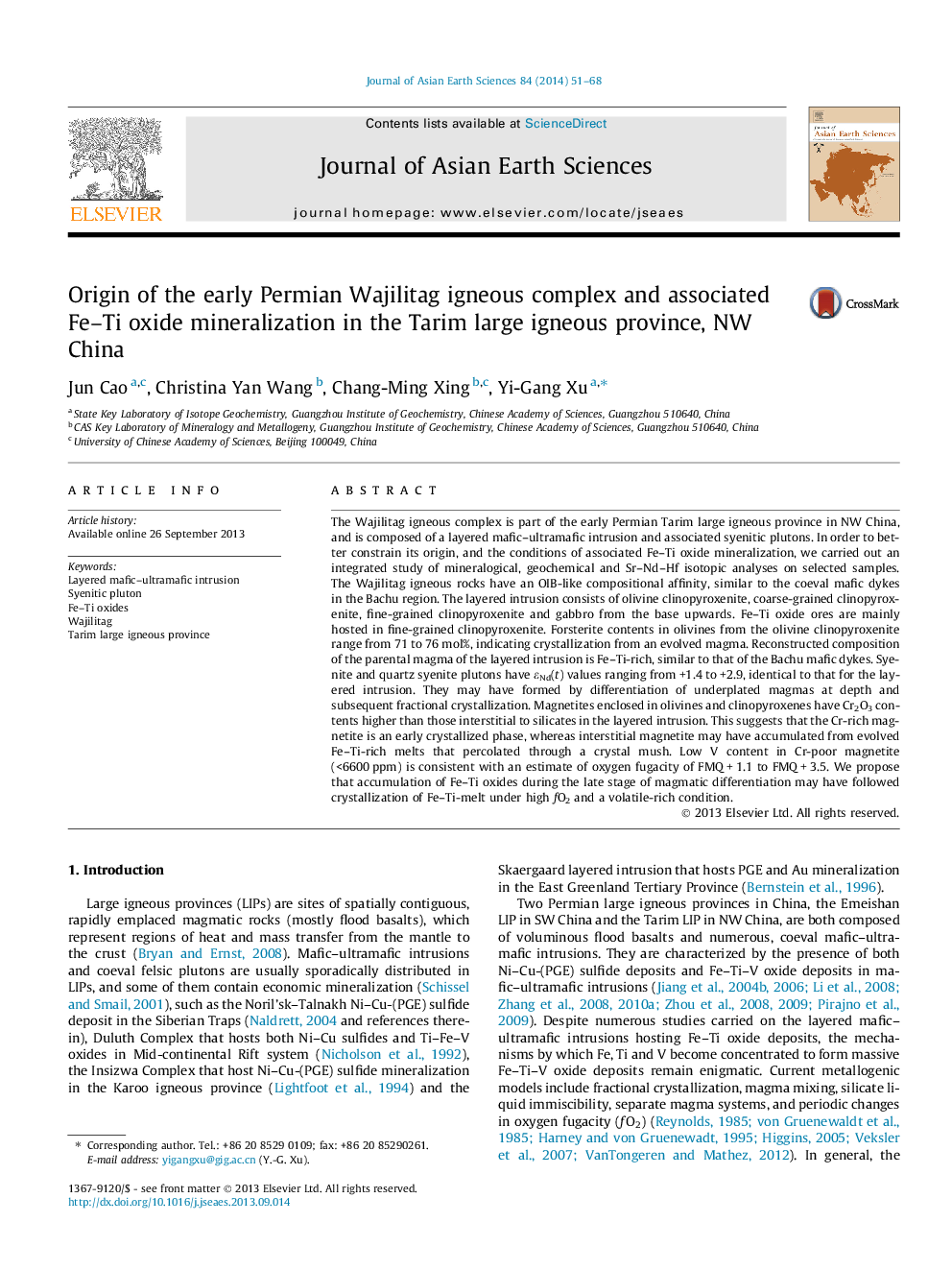| Article ID | Journal | Published Year | Pages | File Type |
|---|---|---|---|---|
| 4730746 | Journal of Asian Earth Sciences | 2014 | 18 Pages |
•Derivation of the Wajilitag complex in Tarim LIP from an OIB-like mantle source.•The mafic–ultramafic intrusions crystallized from a Fe–Ti-rich basaltic magma.•V–Fe–Ti mineralization was promoted by high fO2 during magma differentiation.•Syenite may have formed by remelting of underplated mafic cumulates.
The Wajilitag igneous complex is part of the early Permian Tarim large igneous province in NW China, and is composed of a layered mafic–ultramafic intrusion and associated syenitic plutons. In order to better constrain its origin, and the conditions of associated Fe–Ti oxide mineralization, we carried out an integrated study of mineralogical, geochemical and Sr–Nd–Hf isotopic analyses on selected samples. The Wajilitag igneous rocks have an OIB-like compositional affinity, similar to the coeval mafic dykes in the Bachu region. The layered intrusion consists of olivine clinopyroxenite, coarse-grained clinopyroxenite, fine-grained clinopyroxenite and gabbro from the base upwards. Fe–Ti oxide ores are mainly hosted in fine-grained clinopyroxenite. Forsterite contents in olivines from the olivine clinopyroxenite range from 71 to 76 mol%, indicating crystallization from an evolved magma. Reconstructed composition of the parental magma of the layered intrusion is Fe–Ti-rich, similar to that of the Bachu mafic dykes. Syenite and quartz syenite plutons have εNd(t) values ranging from +1.4 to +2.9, identical to that for the layered intrusion. They may have formed by differentiation of underplated magmas at depth and subsequent fractional crystallization. Magnetites enclosed in olivines and clinopyroxenes have Cr2O3 contents higher than those interstitial to silicates in the layered intrusion. This suggests that the Cr-rich magnetite is an early crystallized phase, whereas interstitial magnetite may have accumulated from evolved Fe–Ti-rich melts that percolated through a crystal mush. Low V content in Cr-poor magnetite (<6600 ppm) is consistent with an estimate of oxygen fugacity of FMQ + 1.1 to FMQ + 3.5. We propose that accumulation of Fe–Ti oxides during the late stage of magmatic differentiation may have followed crystallization of Fe–Ti-melt under high fO2 and a volatile-rich condition.
